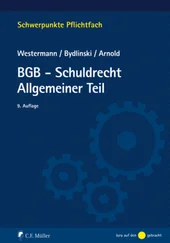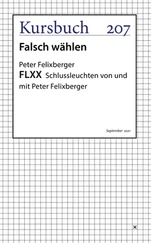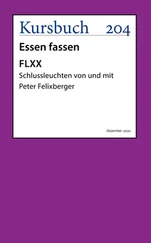“There are maybe a couple million people living within a three-or four-hour drive of any place you’d put a bomb along that fault,” Jacobs said in a voice that had lost none of its anger. “What happens if something goes wrong and all that radioactivity is vented into the air or leaches into the ground?” He was furious and was making no effort to conceal how he felt.
Booker said, “I’m reasonably sure we can prevent any venting and that if we—”
“Reasonably?” Jacobs sneered, interrupting him.
“Exposing a lot of people to radioactivity is an issue,” Booker said angrily. “No doubt about it. But an equally important question you have to answer is what happens if you get another magnitude 8 quake? What if it triggers seismic activity on those other faults Doctor Thompson was talking about a few minutes ago?” He was as mad as he’d ever been in his life. He’d dealt with stubborn fools all his life. Stubborn fools with Ph.D.’s. He stormed over to where Jacobs was sitting and slammed his fist on the table. “If you think that’s a serious possibility, my question to you is this: Do you try to come up with a way to stop it, or do you just shrug and say, sorry, there’s nothing we can do. It’s an act of nature.”
Booker turned to Atkins, who stood with his back to him, staring holes in the blackboard. “What if you get another triple here? Isn’t that what’s got everyone worried? It’s sure as hell got me worried. I wouldn’t want to see another mag 8 earthquake rip through the valley. It couldn’t survive it, and I’m not sure the country could.”
“We still don’t know how much energy is locked down there,” Atkins said. “There aren’t any adequate ways to measure it.”
“Excuse me, excuse me,” Booker said, clenching his fists and lowering his head in frustration. “But didn’t I just hear a discussion of multiple fractures along that new fault. Isn’t that evidence of elastic strain energy?”
“Yes, but the problem’s always been trying to measure it,” Jacobs said, his hostility unabated. “All we can say for certain is that deformations, or uplift, or the number of aftershocks can indicate a serious buildup of tectonic stress. But we don’t know how much stress has actually loaded up there, or how much it would take to trigger an earthquake.”
Booker took a deep breath. He wondered if the man was even listening to him. “Let me put it as simply as I can,” he said. “Do you think there’s going to be another big earthquake? That’s the question, isn’t it? Is another big earthquake possible?”
For a long time, no one spoke. Then Jacobs said, “Yes, it’s possible.”
NEAR BENTON, KENTUCKY
JANUARY 16
8:00 A.M.
THE NEWS ABOUT THE DEEP FISSURE CAME FROM Lauren Mitchell, who’d managed to find a Red Cross unit near Mayfield with a shortwave radio. Shortly after first light, a team from the earthquake center in Memphis flew directly to the site aboard an Army UH-60 helicopter.
Elizabeth Holleran had never seen anything like it: a fissure running nearly a mile long at depths varying from two hundred to six hundred feet. The deep tear in the ground had been much larger at one point. Visible from the air, the scar that marked where it had already closed extended nearly two miles through the hilly, forested west Kentucky countryside.
It was just after eight in the morning. Powerful spotlights hooked to portable generators illuminated the depths of the crevasse. After spending an hour inspecting it and helping to set up the lights, Elizabeth was ready to make a descent.
Atkins took her aside. “You’re sure about this?” he asked. He didn’t like anything about the plan, but he realized there was no stopping her. The fissure provided an unprecedented opportunity to look for evidence of previous earthquakes. Elizabeth was determined to make the most of it.
“I couldn’t get a trench this good in California if I had a dozen backhoes working overtime for a decade,” she said. She’d spent three years digging two trenches on the San Andreas that were ten feet deep and barely fifty yards long. They didn’t compare.
Elizabeth, Atkins, and a small team from the earthquake center had made the hurried trip to Millet Creek. Paul Weston had wanted to send along Stan Marshal, but had to back off when Atkins and Elizabeth refused to go if he was in the party. Weston chose not to force the issue, realizing he didn’t have a choice. They needed Elizabeth because of her expertise.
The accident with the explosive charge still nagged at Atkins. He wanted to believe it was an accident and yet it bothered him. A man with Marshal’s background and field expertise didn’t make a nearly lethal mistake like that. It just didn’t happen. He needed to think it through. So far he had only a troubling suspicion and enough lingering anger to keep Marshal as far away from him as possible.
He’d hoped Walt Jacobs would make the trip, but Jacobs had been unusually subdued since their conversation with Draper and Booker. Jacobs had begged off looking at the crevasse, saying he needed to stay at the earthquake center.
Atkins guessed there was more to it than his friend’s negative reaction to Booker’s provocative suggestion about using a nuclear explosion. Atkins wasn’t ready to take the idea seriously either. It worried him that an eminent scientist like Steve Draper seemed so interested. After the meeting with Booker, Draper had peppered all of them with pointed, often unanswerable questions. Jacobs had looked distracted, even uninterested, which wasn’t like him. Atkins figured it had to do with his wife and daughter. He still hadn’t had any word on their safety.
Elizabeth wore coveralls, leather gloves, and a hard hat equipped with a powerful spotlight. She also carried a small 35-mm camera from a strap around her neck. They were going to lower her by rope into the fissure, using the helicopter’s electric-powered hoist and air rescue seat.
Atkins didn’t want her to be down there any longer than necessary. Several mild tremors had shaken the region since their arrival and parts of the trench were showing signs of collapse. Pieces of the edge kept breaking away and falling into the chasm.
Atkins had wanted to make the descent with her, but knew he’d only get in the way.
Elizabeth planned to descend as far as possible, looking for evidence of sand blows or offsets, thin cracks in the soil, some of them no more visible than a hairline fracture. Buried in the various strata, they were telltale signs of earthquakes and her trained eye, sharpened by years of trenching in the San Andreas fault, was expert at picking them out. The recent earthquake had laid them all bare, creating a mural of the past.
She’d look for bits of carbon—fragments of leaves, peat, or twigs deposited in the soil about the time the offset or sand blows had occurred.
By radiocarbon dating these fragments, she could develop a stratigraphic map of the history of the fault’s previous earthquakes. Another Army helicopter—it was already heading their way—would take the samples to the University of Illinois at Champaign-Urbana where they could be carbon-dated. It was the closest accelerator mass spectrometer, a device that could get precise dates from even minute bits of carbon and, in so doing, date the earthquake that had produced the offsets, sand blows, and other formations Elizabeth might find.
Elizabeth didn’t need much carbon, just a few grains. The technology was based on burning the fragments and converting them to carbon dioxide. The carbon dioxide was then heated and converted to graphite. The graphite was inserted into the spectrometer, which could analyze the carbon-14 atoms in the sample and determine its age, give or take thirty years.
Читать дальше












